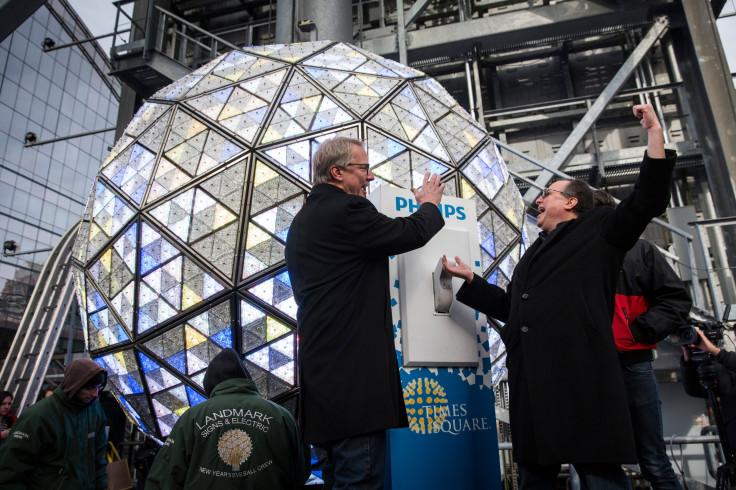Why Does New York Drop The Ball? Facts, History About Times Square New Year Tradition
Organizers of this year's New Year's celebration in Manhattan's Times Square announced Monday that U.N. Secretary-General Ban Ki-moon would be in charge of dropping the iconic crystal ball Saturday night, signaling the beginning of 2017 in New York City.
"At a time when the world seems ever-more fractured, divided and disconnected the symbolism of our global celebration highlighting the United Nations and its global goals could not be more important," said Tim Tompkins, president of the Time Square Alliance. "Unlike too many other voices in the world today, Secretary-General Ban Ki-moon’s legacy of bringing people and nations together, supporting refugee relief efforts and opposing war align perfectly with New Year’s hopes for a better and more just world."
Ban joins a list of other notable figures who have been selected for the ceremonial role in past celebrations including boxing legend Muhammad Ali in 2000, Bill and Hillary Clinton in 2008 and former New York City Mayor Michael Bloomberg, who was affectionately joined by pop singer Lady Gaga in 2011.
Since 1996, the Times Square Alliance has brought in special guests to press the button, which actually doesn't drop the ball at all. That same year, New York modernized its previous system of pulleys and stopwatches and installed a high-tech control room with computers that manage the structure's descent down the flagpole. New Year's ceremonies in Times Square, however, far predate the button-pressing ceremony — even the 109-year-old tradition of dropping the giant ball.

The first New Year's celebration in Times Square was hosted in 1904 by New York Times owner Adolph Ochs, who wanted a grand fireworks display to mark the opening of the newspaper's new One Times Square location. After 200,000 people attended the massive event, Ochs swore to top the festivities in future celebrations, but was unable to get a fireworks permit in 1907. Instead, he set up a 700-pound, 5-foot ball covered in 100, 25-watt light bulbs and sent it down the flag pole at the turn of the year, channeling a 19th-century tradition of using "time balls" to visually signal the passage of time for sailors, whose instruments were not standardized.
Since then, the iconic ball has been redesigned six times, gathering hundreds of thousands of people each year since with two exceptions. The ceremony was suspended during the wartime years of 1942 and 1943 for fear of German aerial attacks. The ball's most recent makeover took place for the tradition's 100th anniversary in 2007 when Waterford Crystal introduced the 11,875-pound, 12-foot structure covered in 2,688 Waterford Crystal triangles that will drop Saturday in front of an estimated 1 million people in the largest U.S. city.
© Copyright IBTimes 2025. All rights reserved.






















